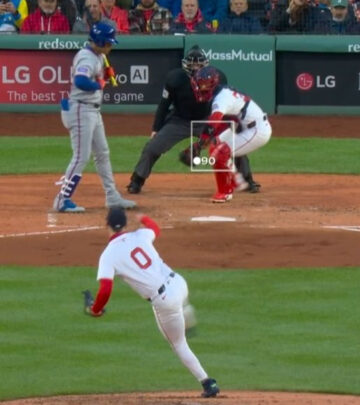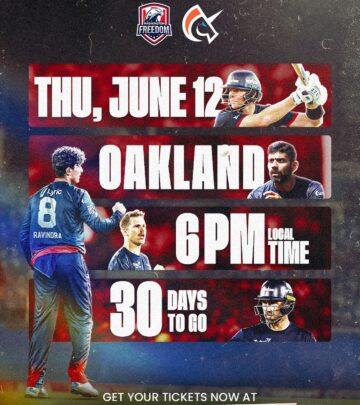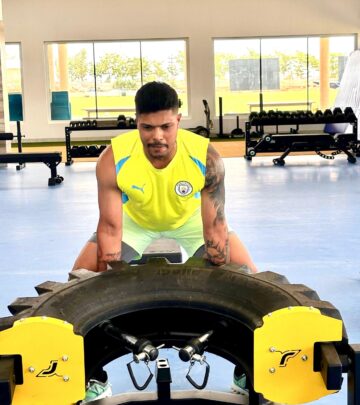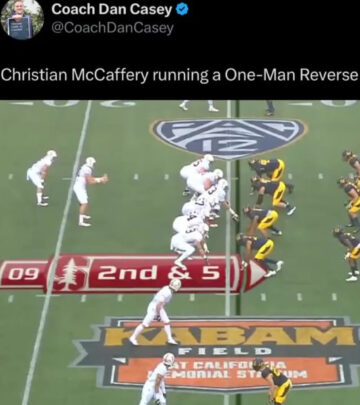Juan Soto’s Swing Speed Shift
Data shows a steep drop in swings from 68.1% in 2024 to 46.6% in 2025. | MLB Shift Report!

Image: Instagram
Juan Soto remains one of MLB’s brightest talents, yet recent data highlights a notable change in his approach at the plate. According to statistical insights shared by Michael Fisher (@codifybaseball) on Instagram, the percentage of Soto’s competitive swings with a bat speed of at least 74 MPH has dropped from 68.1% in 2024 to 46.6% in 2025. This shift has caught the attention of many baseball analysts and fans, prompting discussions about what it might mean for both the star hitter’s technique and overall game strategy.
Competitive Swing Metrics
Soto’s numbers represent more than just an isolated statistic; they provide insight into his swing dynamics at a time when bat speed is a critical measure of a hitter’s performance. Competitive swings are defined by a bat speed threshold of 74 MPH or higher, a metric that separates power swings from more tentative approaches. The sharp decrease from 68.1% to 46.6% suggests that Soto’s approach at the plate may have undergone adjustments between seasons. While many factors could influence these measurements—from changes in training regimens to alterations in pitch quality or even situational strategies—the data itself is an unmistakable testament to a swing speed shift.
Data And Detailed Analysis
The recent Instagram post by Michael Fisher, a reputed voice in baseball analytics, clearly outlines the decline in competitive swing percentages over two consecutive seasons. The accompanying image, which graphically represents this change, allows both coaches and fans to visually compare the performance metrics of Soto’s swings. In 2024, nearly seven out of ten of his swings met the competitive threshold. By 2025, this figure dropped dramatically to fewer than one in every two swings. This nearly 22-point differential raises important questions about Soto’s timing, mechanics, and overall readiness coming into the season.
Several theories are circulating among baseball circles. Analysts speculate that such a decline could reflect a strategic decision to adjust his approach, a possible response to evolving pitching strategies, or even the natural fluctuations that athletes experience over time. Despite these theories, no official statement from Soto or his coaching staff has been released to explain the change, leaving room for informed conjecture based on the data alone.
Implications For Mlb Strategy
Within the competitive landscape of baseball, swing speed is often correlated with power-hitting potential and overall offensive production. A reduction in competitive swing rate could imply a more selective or modified approach at the plate. Coaches might be encouraging adjustments to reduce swings in poor-count situations, or it may indicate that Soto is fine-tuning his swing mechanics to counter specific pitching trends. It is important to note that while a reduction in bat speed might seem alarming at first glance, many factors contribute to a hitter’s success beyond raw swing speed.
Moreover, comparing Soto’s stats with those of his contemporaries could shed further light on whether this trend is unique to him or part of a broader adjustment in batting tactics. Recent related posts by other sports analysts and team accounts emphasize similar shifts among players who have taken a more measured approach at the plate, suggesting that the evolving dynamics of MLB pitching and hitting are interlinked. For instance, while other Instagram reports have highlighted outstanding early season performances by pitchers and changes in team win-loss trends, all eyes remain on how top hitters like Soto are recalibrating their swings to remain competitive.
Looking Ahead And Contextual Insights
It’s also worthwhile to highlight that these changes come during a period when baseball analytics are increasingly influencing in-game strategies. The availability of granular data has allowed coaches and players to adjust techniques with almost surgical precision. Soto’s numbers reflect not only his personal adjustments but also the broader evolution of the sport. The statistical community will undoubtedly continue to monitor his performance as the season progresses, paying close attention to whether this decline is a temporary anomaly or a sign of a long-term shift in his batting strategy.
The Instagram image posted by Michael Fisher serves as a valuable visual aid for this narrative, reinforcing the importance of data-driven analysis in today’s game. As fans and experts continue to dissect every nuance of Soto’s performance, this statistical dip underscores the intricate balance between raw athletic prowess and strategic adaptation in MLB. With continued scrutiny and open discussions among baseball insiders, the development of such metrics will likely pave the way for future innovations in player training and game planning.
The conversation around Juan Soto’s swing speed is now a part of a larger dialogue about athletic performance in baseball. Whether this decline reflects a conscious strategy or is simply a phase that will correct itself remains to be seen. What is clear, however, is that the world of MLB is evolving—with data as a key driver—and top players like Soto are right at the heart of that transformation.
Read full bio of Srijita De



















